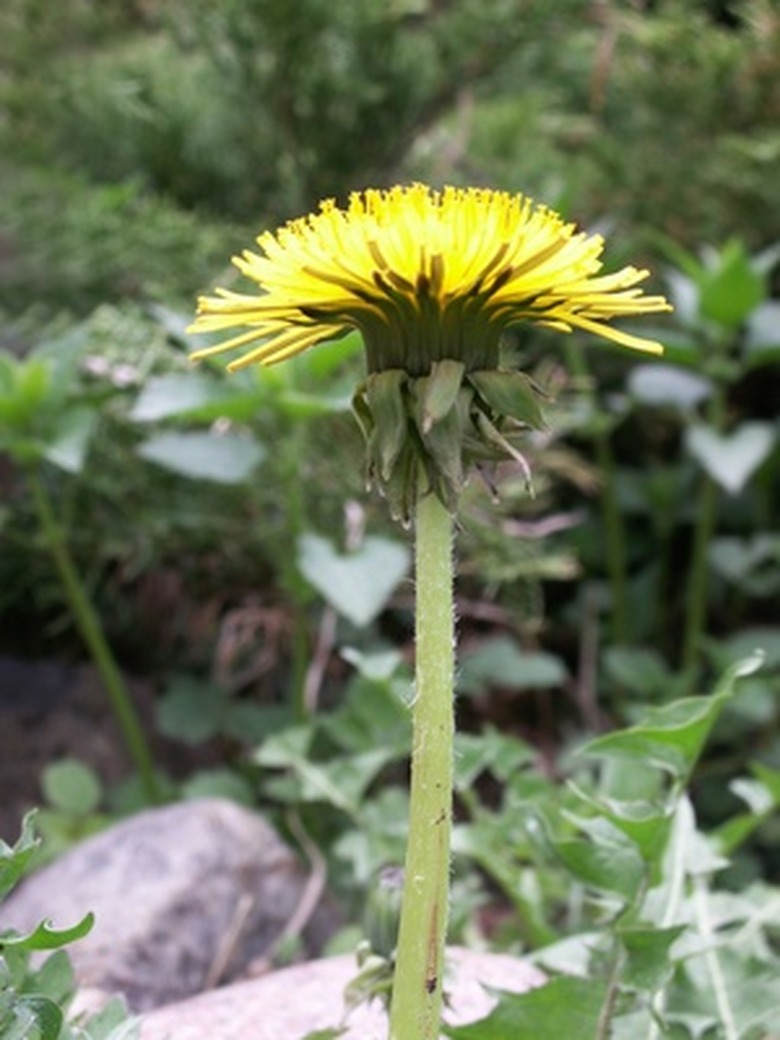Stages Of The Dandelion Flower
The dandelion, a member of the daisy family, is a broad-leaf perennial plant. Dandelions are found in over 60 countries and in almost every type of habitat, other than severe dessert regions. The dandelion has five distinct stages during its life. Other names for the dandelion are Irish daisy, bitterwort and priest's crown.
Seedling
The leaves of a dandelion seedling are a pale yellowish-green color. They are oval in shape and form a basal rosette. The youngest of the leaves have primarily smooth edges. As the leaves of the seedlings mature, the edges will become sparsely toothed or jagged. The leaves will also become wider at the tip and thinner where the leaf meets the stem, losing the oval shape. The leaves have a vein that runs down the middle from tip to end.
Mature Plant
The dandelion plant grows larger as it matures. The leaves transform into 3- to 10-inch leaves with well-defined toothed edges and twist into a looser rosette shape at the center of the plant. The dandelion will not have a visible stem at this point; mature dandelions sit flush against the ground. The root of the plant is thick and runs deep into the ground. When cut ,a white milk-like substance will leak from the plant's root. You can add the mature leaves of the dandelion plant to salads to increase flavor and texture.
Flower
The flower of the dandelion may appear at any time during the growing season. The stem will grow from the center of the leaves. It will grow up to 12 inches tall, and there will be no leaves growing from the stem. The hollow stem will leak the same white milk-like substance as the root, if cut or damaged. A single yellow flower will grow atop the stem. The flower will measure between 1 and 2 inches in diameter.
Fruit
The fruit of the dandelion develops inside the flower of the dandelion plant. The fruit is brown and measures 1/10 inch to 3/16 inch long. The seed is in the shape of a thin elongated oval. At the end of the fruit is a long extension. The extension is two to three times the seed size and extends from the fruit to the pappus. The pappus is a collection of fluffy white hairs that form a circle around the end of the dandelion stem.
Seed
The plant goes from fruit to seed when the pappus disperses from the plant. Seed dispersion normally occurs during a gust of wind. The long hair-like structures of the pappus allow the seeds to travel through the air. Sometimes an animal or person will rub against the dandelion plant, causing the seeds to disperse. Viable seeds that settle in an area of moist soil and receive a full day of sunlight will grow into a new dandelion seedling.
